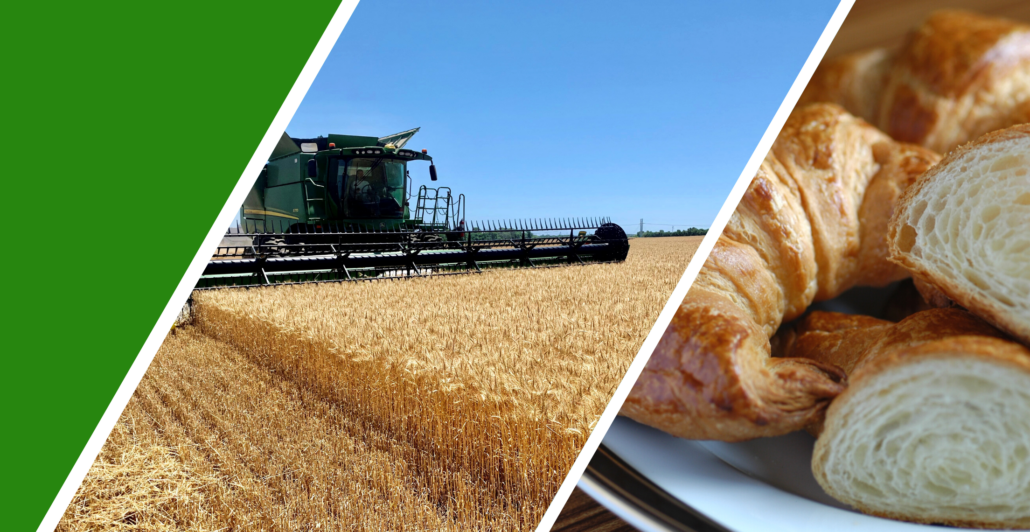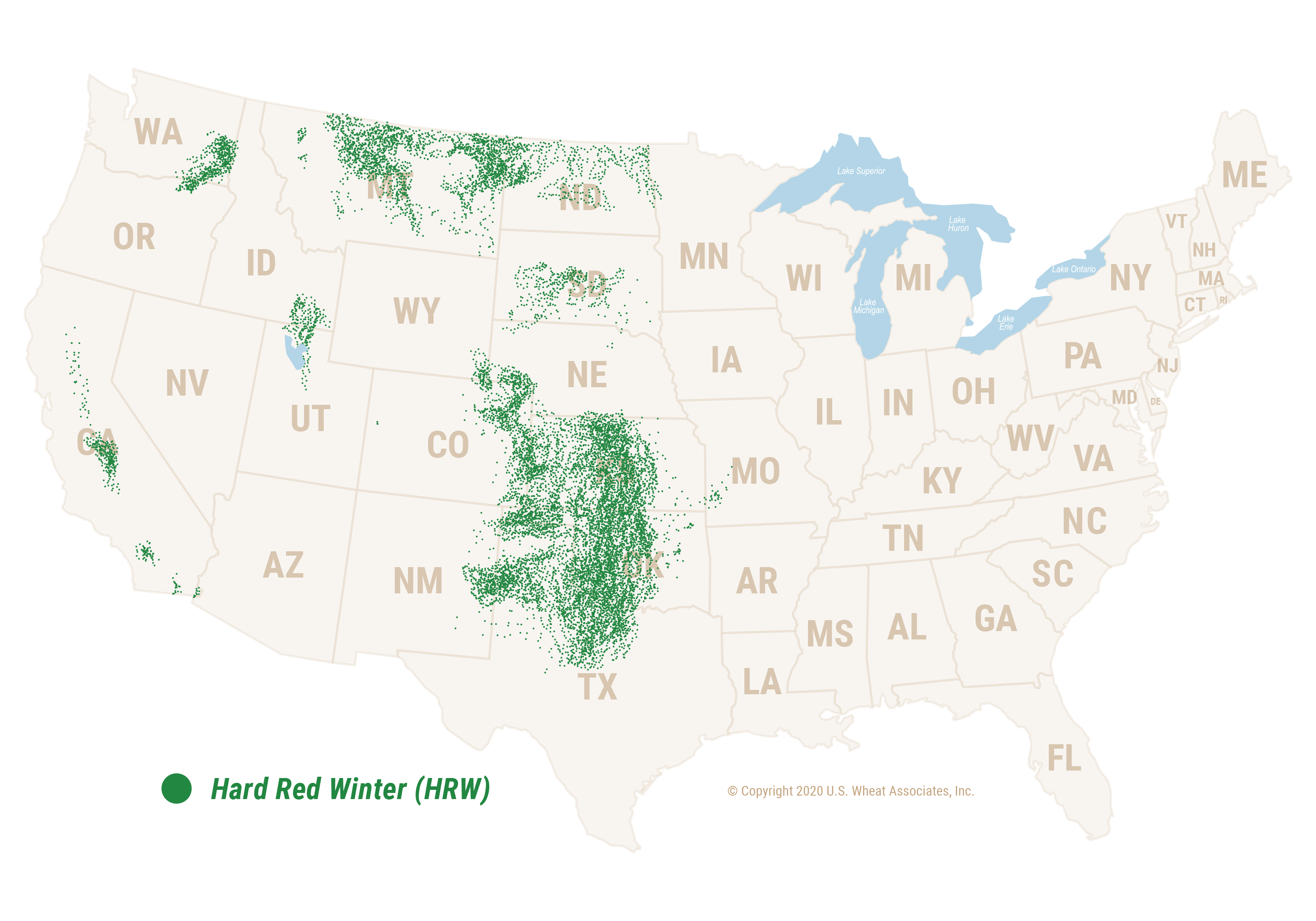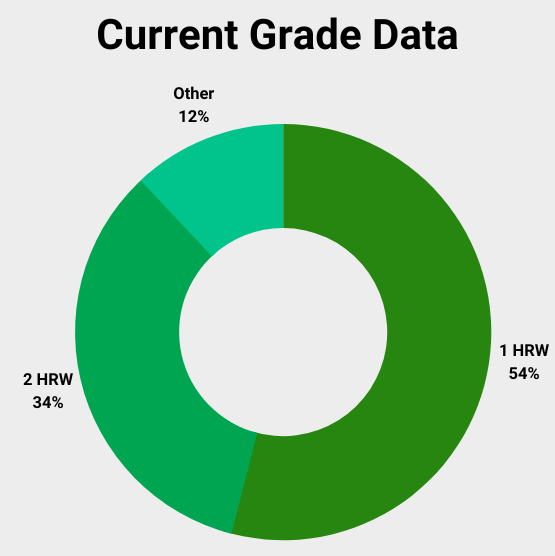With excellent milling and baking characteristics for wheat foods like pan breads, hard rolls, croissants and flat breads, U.S. hard red winter (HRW) is a versatile wheat. It is also an ideal choice for some types of Asian noodles, general purpose flour and as an improver for blending. It has medium to high protein of 10.0% to 13.0% (12% mb), medium hard endosperm, red bran, medium gluten content and mellow gluten.
For the miller, HRW brings consistency to the grist. A balanced mill optimizes flour extraction and helps maximize milling efficiency. Maintaining HRW as the foundation of the mill grist allows the miller to blend other U.S. classes, local wheat or wheat from other origins as cost advantages or product differentiation opportunities develop. For the baker, HRW benefits include improved baking characteristics, including dough stability and water absorption, either alone or as part of a blend. HRW delivers consistency as it is always available and provides the most reliable foundational ingredient for most wheat-based products.
Where is U.S. Hard Red Winter grown?
Grown in the Great Plains, Pacific Northwest (PNW) and California, hard red winter (HRW) is the most widely grown class in the United States. With such a large growing area, conditions can greatly vary among the production regions. HRW wheat can be exported from the Gulf and Pacific ports.
Please select your preferred language, report, and year, and click View Reports.
2023 U.S. Hard Red Winter Production
According to USDA’s Small Grains Annual Summary released September 29, 2023, production of the 2023 U.S. HRW crop is estimated to be 16.4 million metric tons (MMT), a 13% increase from 14.4 MMT in 2022 but below the 5-year average of 18.4 MMT.
- 2023 (MMT)
- Total HRW production in states sampled
- Gulf-exportable subtotal
- PNW-exportable subtotal
- California-Exportable Subtotal
- Total U.S. HRW Production
- 2023 (MMT)
- 16.0
- 11.3
- 4.5
- 0.2
- 16.4
- 2022 (MMT)
- 14.4
- 10.3
- 3.8
- 0.1
- 14.4
- 5-Year Average (MMT)
- 18.1
- 13.6
- 4.4
- 0.1
- 18.4
*States sampled: California, Colorado, Idaho, Kansas, Montana, Nebraska, Oklahoma, Oregon, Texas, Washington, Wyoming.
U.S. Hard Red Winter Crop Quality Data Highlights
Variable growing conditions greatly influenced this year’s HRW wheat crop. Overall, the 2023 crop has generally good kernel characteristics with flour, dough and bake attributes equal to or better than last year and many of the 5-year averages. This crop meets or exceeds typical HRW contract specifications and should provide high value to customers.




